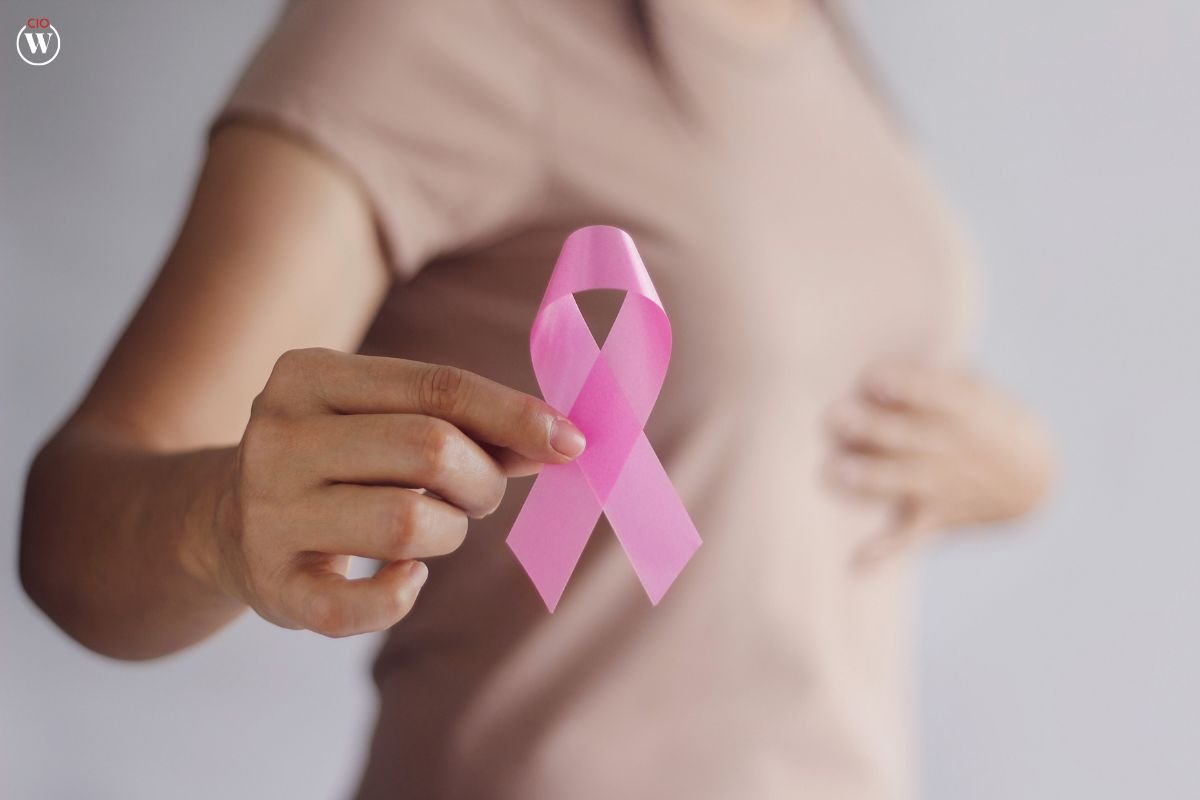Breast cancer is a serious health concern, but finding it early can greatly improve treatment and results. Knowing the signs of breast cancer helps you take action quickly. This guide explores 12 important signs of breast cancer, offering clear details on each one. Spotting these signs early can lead to a faster diagnosis and better management of the disease.
Here are 12 signs of breast cancer:
1. Lump or Mass in the Breast
The presence of a lump or mass is one of the most well-known signs of breast cancer. These lumps are often painless and can vary in size, texture, and shape. They may feel firm, irregular, or hard compared to the surrounding breast tissue. Lumps can also vary in mobility, from freely movable to fixed in place. While many lumps are benign, such as cysts or fibrocystic changes, any new or unusual lump should be evaluated by a healthcare provider. Early detection of a lump can lead to earlier intervention and treatment, which can be critical for effective management of breast cancer.
2. Change in Breast Shape or Size
Significant changes in the shape or size of the breast can be a sign of breast cancer. This might include asymmetry, where one breast appears noticeably larger or smaller than the other. You may also notice that the breast’s shape becomes irregular or distorted. These changes may occur suddenly or gradually. If the alteration in shape or size is persistent or progressive, it warrants a thorough examination. Changes in breast contour can indicate underlying issues, such as the growth of a tumor or changes in the breast’s connective tissue. Recognizing these signs of breast cancer early is crucial for effective diagnosis and treatment.
3. Nipple Discharge

Nipple discharge can be a sign of breast cancer, especially if it occurs without an apparent cause such as breastfeeding or hormonal changes. The discharge can be clear, yellow, green, or bloody. It may come from one or both nipples and can be spontaneous or occur when the nipple is squeezed. Bloody or dark-colored discharge is particularly concerning and should be evaluated promptly. Additionally, discharge that is associated with a lump or other symptoms should be investigated to determine whether it is related to cancer or another condition.
4. Nipple Inversion or Pulling
Nipple inversion, where the nipple retracts or turns inward, can be an early indicator of breast cancer. This change may be sudden or gradual and might be accompanied by other signs of breast cancer, such as changes in the surrounding breast tissue. Nipple inversion can occur due to the pulling effect of a tumor or changes in the underlying breast tissue. If you notice that one or both nipples have become inverted or pulled inward, especially if this change is recent or accompanied by other symptoms, it is important to seek medical advice for further investigation.
5. Breast Skin Changes
Skin changes on the breast can be a key indicator of breast cancer. Look for signs such as redness, swelling, or a change in texture. The skin might appear dimpled, puckered, or have a texture similar to that of an orange peel, known as peau d’orange. These changes are often due to cancerous cells affecting the skin and underlying tissues. Skin changes can also be a sign of inflammatory breast cancer, a rare but aggressive form of the disease. Any noticeable changes in breast skin should be examined by a healthcare provider.
6. Pain or Tenderness

Breast pain, or mastalgia, is a symptom that can be caused by various conditions, including hormonal changes and infections. However, persistent or unusual pain in the breast, especially if it is localized and not related to the menstrual cycle, can be one of the signs of breast cancer. Pain associated with cancer is often felt as a deep, aching discomfort rather than surface tenderness. If you experience persistent or unusual pain in the breast, it is important to consult a healthcare provider to determine the cause and appropriate course of action.
7. Swelling in the Armpit or Collarbone Area
Swelling or lumps in the armpit or collarbone area can indicate that breast cancer has spread to the nearby lymph nodes. This swelling can occur as a result of cancer cells migrating to the lymph nodes, which are crucial for filtering lymph fluid and fighting infections. Swelling in these areas may be accompanied by tenderness or discomfort. If you notice any swelling or lumps in the armpit or collarbone area, it is important to have them evaluated by a healthcare provider to assess for possible cancer spread or other conditions.
8. Changes in the Nipple Area
Changes in the appearance of the nipple area can be one of the signs of breast cancer. These signs may include the development of sores, ulcers, or an unusual texture. The nipple area might become crusty, scaly, or inflamed. Such changes can indicate the presence of Paget’s disease of the nipple, a rare form of breast cancer that affects the skin and areola of the nipple. If you notice any unusual changes in the nipple area, it is crucial to seek medical evaluation to determine the cause and appropriate treatment.
9. Persistent Itching
Persistent itching or irritation of the breast or nipple area can be an indicator of breast cancer, though it is less commonly discussed. Itching that does not resolve with usual treatments or is accompanied by other signs of breast cancer, such as redness, swelling, or changes in the skin’s texture, should be evaluated. Persistent itching may result from changes in the skin caused by cancer or an inflammatory response. A healthcare provider can help determine whether the itching is related to breast cancer or another condition.
10. Unexplained Weight Loss
Unexplained weight loss can be a symptom of advanced breast cancer. This weight loss occurs without changes in diet, exercise, or lifestyle and can be a sign of the body’s increased energy demands due to cancer. Significant weight loss may also indicate that the cancer has spread or that the body is having difficulty metabolizing nutrients. Other signs of breast cancer can include lumps in the breast or underarm, changes in breast shape or size, and unusual discharge from the nipple. If you experience unexplained weight loss or any of these signs, it is important to consult with a healthcare provider to investigate the cause and assess for possible underlying conditions.
11. Feeling of Hardness in the Breast

A feeling of hardness or thickening in the breast tissue, even without a distinct lump, can be an early sign of breast cancer. This change in texture might feel like a firm area or a general thickening of the breast tissue. It can be indicative of a tumor that is not yet fully formed or a change in the tissue density due to cancer. Other signs of breast cancer can include changes in the shape or size of the breast, discharge from the nipple, or changes in the skin over the breast. If you detect any hardness or unusual changes in breast texture, it is essential to seek medical advice for further evaluation and diagnosis.
12. Swollen or Enlarged Breast Veins
Swollen or enlarged veins on the surface of the breast may be a sign of breast cancer, particularly if accompanied by other signs of breast cancer. These changes in the veins can result from increased blood flow or pressure due to the presence of a tumor. Enlarged veins may be more noticeable and prominent on the breast’s surface. If you observe any swelling or changes in the veins, especially if other symptoms are present, it is important to have them evaluated by a healthcare provider.
You may have pain in other veins in your body, too, such as your legs, or worry that you have a different condition. For proper diagnosis, management, and, if necessary, surgery, you should see a medical professional. An experienced general surgeon understands a range of conditions to help you, using leading technology and a custom treatment plan.
Conclusion
Knowing the signs of breast cancer—like lumps, changes in shape, nipple discharge, skin changes, and swelling—is crucial for early detection and treatment. Regular self-exams, clinical exams, and mammograms are key for monitoring your breast health. If you notice any symptoms, consult a healthcare provider promptly. Early detection improves treatment chances. For more info, consult health organizations and your healthcare provider.









